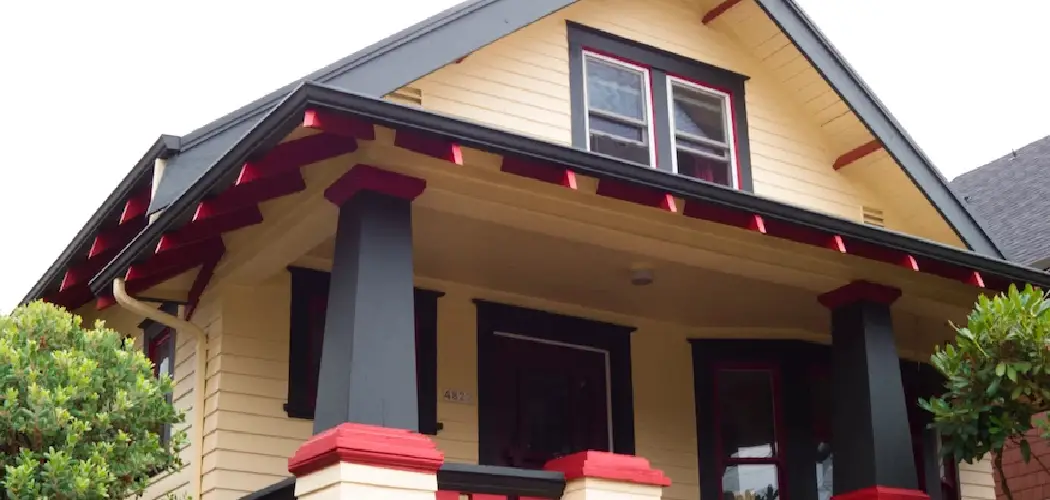When it comes to updating the exterior of your home, using wood accents is a timeless way to upgrade its look and draw attention. Not only does adding wood accents to your home’s exterior have the potential to make it more attractive, but incorporating it into your design plan also adds value if you ever decide to list on the market.
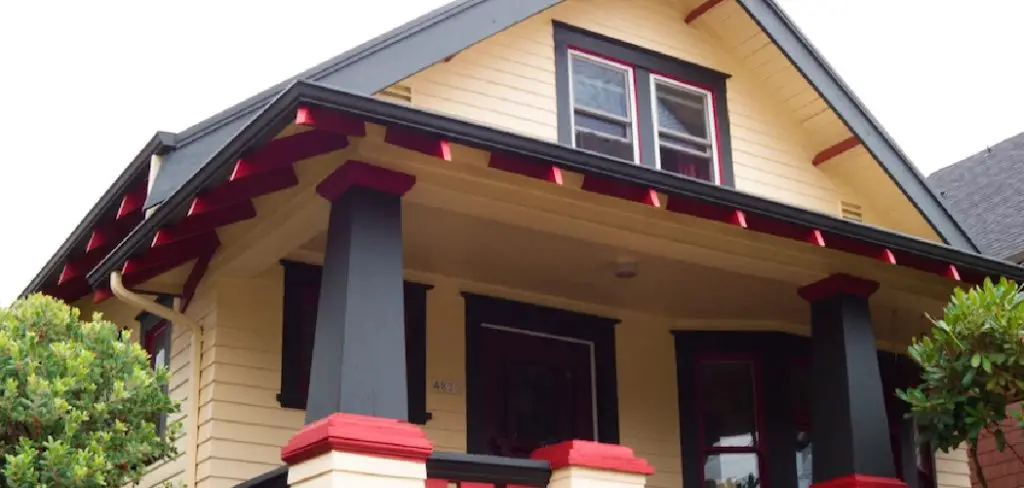
But in order for your efforts to truly pay off, there are some specific steps that need to be taken when implementing wooden features onto the outside of a building. In this post, we will discuss exactly how to add wood accents to home exterior while still creating an attractive and cohesive aesthetic with whatever style of house or surrounding landscape you may encounter.
What Does Adding Wood Accents Mean?
Adding wood accents to a home exterior involves incorporating wooden elements into the design scheme of the building. These features can be both visible and hidden, but they all serve to enhance the look of your house and provide a unique touch that stands out from other homes in the area.
Some examples of wood accents include Wood shutters, wooden beams, cedar siding, wood trim around windows and doors, cedar decking, pressure-treated wood decks and patios, wooden gazebos or trellises, handcrafted wood carvings, lattice panels along the bottom of a house’s exterior walls.
How to Choose Wood Accents for Your Home Exterior?
Once you’ve decided to add wood elements to your house, there are a few things to keep in mind when selecting the right accents. First and foremost, consider how the wood will look against the existing structure of your home. You want it to be complementary, not contrasting or distracting.
It’s also important to choose the wood that is appropriate for the climate and weather conditions of your area. For example, if you live in a humid environment, you may want to opt for pressure-treated wood that can better withstand harsh temperatures and moisture levels without deteriorating quickly.
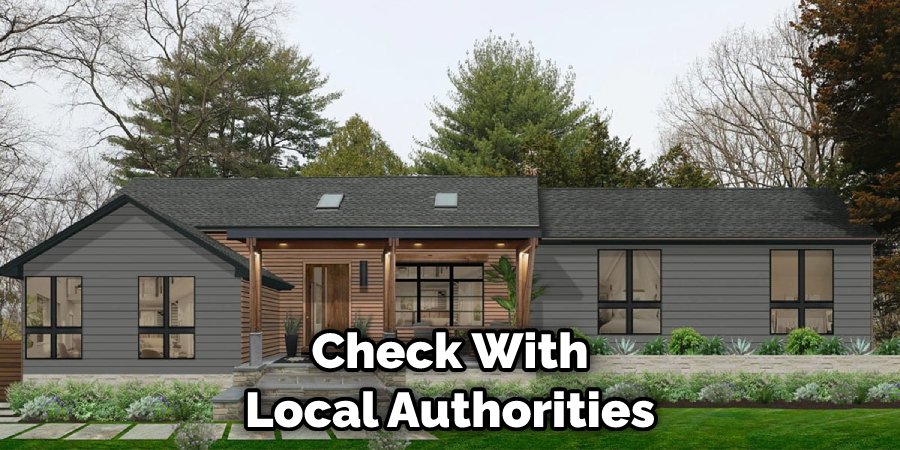
Finally, keep in mind any building codes or regulations that may be relevant to your area. Before adding any wood accents, make sure that you check with local authorities and ensure that they meet all safety requirements and standards.
Things to Remember Before Adding Wood Accents to Home Exterior
1. Climate
Consider the climate. Wood is susceptible to damage from weather conditions, so if you live in an area that gets a lot of rain or snow, you may want to consider other materials for your exterior accents.
2. Maintenance
Wood requires regular maintenance to keep it looking great and to prevent rot and decay. Make sure you are prepared for the time investment of regularly treating your wood accents with a sealant or water-resistant finish.
3. Budget
Adding wood accents can quickly become expensive, so make sure that you have the budget to include them in your exterior design. Always consider other alternatives that may be more affordable and require less maintenance.
4. Style
Wood accents can add a touch of rustic charm or modern sophistication to your home exterior, depending on the style you choose. Make sure that whatever wood accents you choose fit the overall look and feel of the rest of your design.
By considering these four key factors before adding wood accents to your home exterior, you can ensure that the final result will be one that you love. With a little planning and research, you can transform the face of your home with beautiful wood accents that will last for years to come.
Choosing the Best Wood for Decorating the Home Exterior
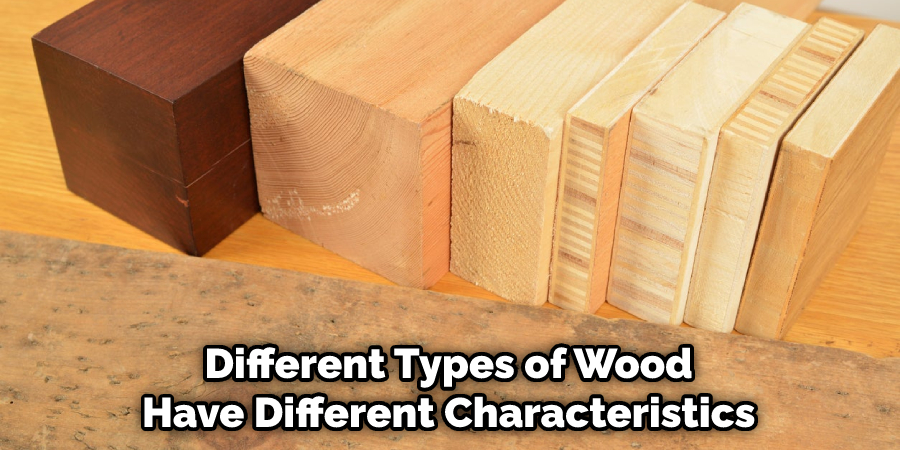
When it comes to adding wood accents to your home exterior, not all woods are created equal. Different types of wood have different characteristics, which make them better suited for certain types of exterior applications. It’s important to do your research and select a type of wood that will be able to stand up to whatever climate or weather conditions your home may face.
Types of wood that are often used for exterior decorating include cedar, redwood, pine, spruce, and cypress. These woods are naturally resistant to rot, decay, and insect damage which makes them ideal for outdoor applications. However, all wood is susceptible to weather-related damage, and regular maintenance (such as annual staining or painting) is necessary to keep your wood accents looking their best.
You may also want to consider a type of composite wood, such as Trex Decking, for exterior applications. Composite woods are made from recycled materials and require little maintenance other than the occasional cleaning with a hose or pressure washer. They also come in a variety of colors and styles, making them easy to customize for your home’s exterior.
By choosing the right type of wood for your home exterior, you can ensure that your wood accents will last for many years to come. It’s important to do your research so that you can pick out the best type of wood for your climate and lifestyle.
Required Materials and Tools
In addition to selecting the right type of wood for your home exterior, you also need to make sure that you have the necessary materials and tools to get the job done. Here are some common supplies that you will need:
- Wood screws or nails
- Exterior paint or stain
- Masonry drill bit (for drilling into masonry)
- Sandpaper (for smoothing edges)
- Protective gloves and eyewear
- Level (to ensure accuracy when installing wood accents)
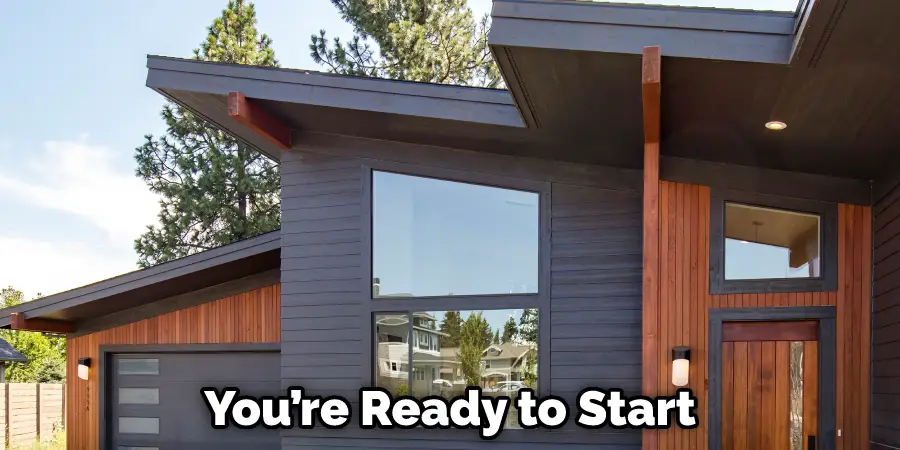
Once you have all of the necessary materials, you’re ready to start adding your wood accents to your home exterior. With careful planning and attention to detail, you can transform the look of your home in no time.
10 Tips on How to Add Wood Accents to Home Exterior
Now that you have all of your materials and tools ready to go, it’s time to start installing your wood accents.
1. Measurement
Measure twice and cut once. This is a simple but important rule when it comes to adding wood accents to your home exterior. Be sure to measure accurately before cutting any pieces of wood so that you don’t have to go back and redo the work.
2. Safety
Safety first! Before you start drilling or hammering, make sure that you are wearing protective gloves and eyewear to guard against any potential accidents. It is the responsible thing to do.
3. Test Stain or Paint Color
If painting or staining your wood accents, be sure to test out the color beforehand on a small piece of scrap wood so you can make sure that it’s the right look for your home. The color on the paint chip or sample board is usually not an exact match.
4. Pre-drill holes
If you are working with wood that is prone to splitting, such as pine or cedar, consider pre-drilling pilot holes before inserting your screws or nails. This will help keep your wood from splitting when attaching it to the home.
5. Use Stainless Steel Screws and Nails
When possible, use stainless steel screws and nails for attaching wood accents to your home exterior. These are designed to last longer than regular steel fasteners and won’t rust or corrode over time.
6. Finish Edges First
Before you start putting your wood accents in place, take the time to finish any edges or corners. Sandpaper can help smooth out any rough spots and give a professional look to your finished project.
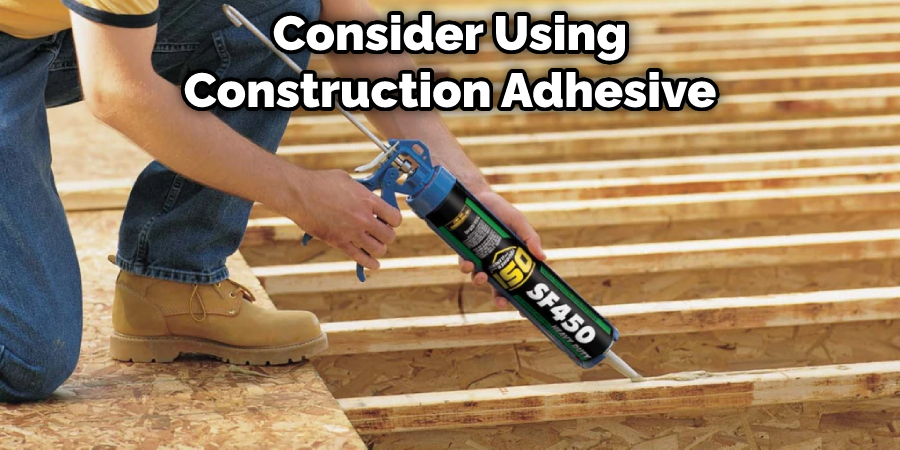
7. Use Construction Adhesive
When attaching wood accents directly onto masonry or concrete walls, consider using construction adhesive instead of nails or screws for added strength and stability.
8. Level the Accents
Before securing your wood accents in place, make sure that they are level with one another and that each piece is even. A level will come in handy to guarantee accuracy when attaching your wood accents to the home exterior.
9. Apply Sealer or Varnish
After you have installed your wood accents, it is important to finish them off with a quality sealer or varnish. This will help protect the wood from moisture and other elements, so it lasts for years to come.
10. Clean Regularly
Finally, be sure to clean your wood accents on a regular basis with a hose or a pressure washer. This will help keep them looking their best and ensure that they last for years to come.
By following these simple tips on how to add wood accents to home exterior, you can easily add wood accents to your home exterior and transform the look of your house in no time! With some careful planning and attention to detail, you, too, can take your home from drab to fab.
8 Maintenance Tips for Wood Exterior Accents
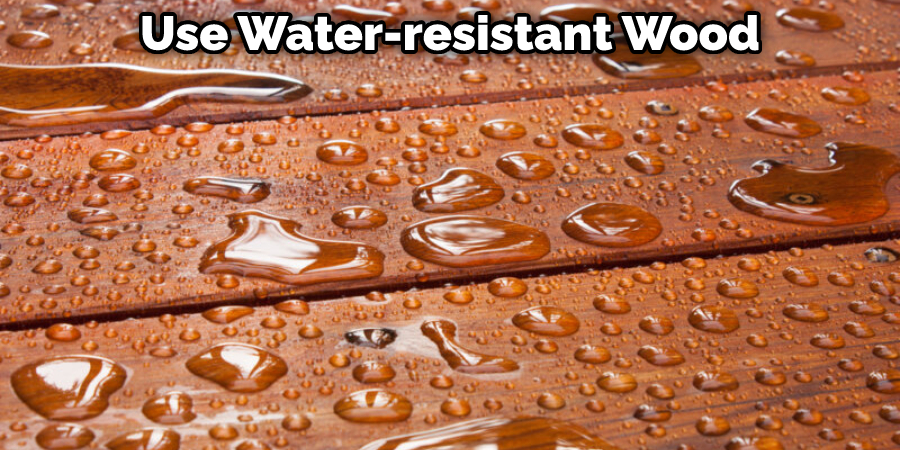
- Clean and inspect wood accents regularly. Inspecting exterior wood accents regularly will help identify any potential problems, such as rotten wood or insect damage before it becomes a major issue. Regularly cleaning your wood exterior accents also helps to keep them looking great and will help extend their lifespan.
- Make sure to only use water-resistant wood for exterior accents. Choosing a water-resistant wood material is key when adding wood accents to your home’s exterior. Water-resistant woods such as cedar, redwood, and teak are great choices that will stand the test of time in harsher climates.
- Apply a sealant or wood preservative. Sealants and wood preservatives can help protect your exterior wood accents from weathering and will also keep them looking fresh for longer. However, be sure to read the product labels carefully so that you don’t end up damaging your wood accents instead of protecting them.
- Avoid painting your wood accents, as it can damage them. Painting wood accents is generally not recommended because it can cause the wood to crack or warp in time.
- Regularly check for signs of insect or rot damage. Insects and moisture can both be destructive to exterior wood accents, so routinely inspect your wood accents for any signs of decay or insect activity, such as holes, tunnels, or sawdust.
- Look out for signs of warping or splitting. Warping and splitting can be caused by extreme temperatures, humidity or moisture. If you notice any warping or splitting in your exterior wood accents, it’s best to replace them as soon as possible.
- Avoid placing wooden furniture too close to the house’s exterior. Wooden furniture should be placed at least a foot away from the house’s exterior, as this can help reduce any moisture accumulation that may lead to rot in the wood. This also ensures that your furniture will stay looking great for longer.
- Repair any damaged wood accents as soon as possible. If you do spot any signs of damage to your exterior wood accents, it’s important to repair them quickly to prevent further deterioration. This may involve sanding down the wood and then treating or resealing it.
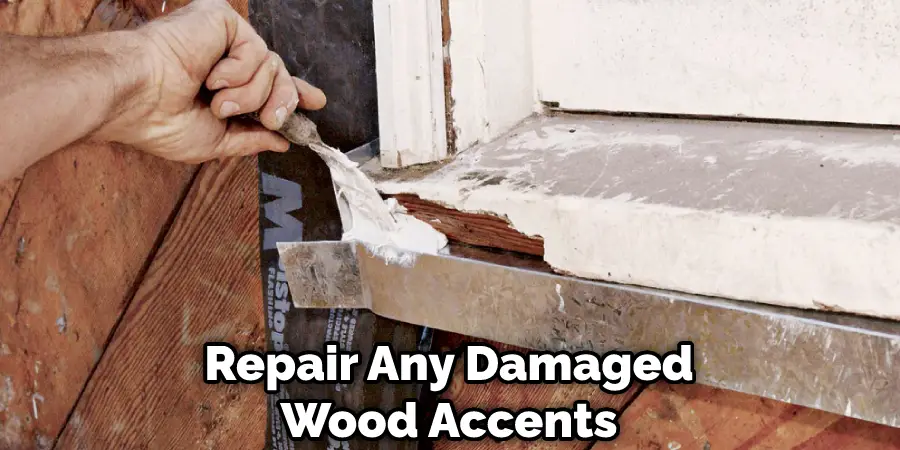
By following these simple tips on how to add wood accents to home exterior, you can ensure that your wood exterior accents will look great and last for years to come. With the right care and maintenance, you can keep your home’s exterior looking its best with wood accents.
Conclusion
Adding wood accents to your home’s exterior can be a great way to spruce up its look and increase its value at the same time. Plus, it’s easy for any homeowner to do. With just a few tools and some putty with this guide on how to add wood accents to home exterior, you can create beautiful wooden features that will last for years to come.
By understanding how to prepare the surface and use the appropriate types of sealers and weatherproofing, you’ll be able to enjoy a stunning outdoor area for years.
A pleasant outdoor area like this is sure to draw the attention of others and make your home stand apart from all the rest! So, if you’re ready for a fun project that will get you outside in no time and give you an oasis that all of your friends and family can admire – adding wood accents is definitely the way to go.

